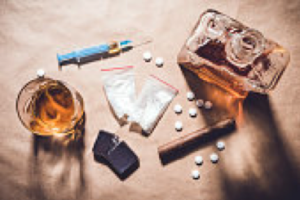“As I type this answer, my eyes are dilating and my hands are shaking so much that I have to get up and take a break.” A Quora user’s response when asked what it felt like to be in recovery from a drug addiction.
According to the New York Times, “State and federal governments spend in excess of $15 billion (and insurers contribute an additional $5 billion) on substance abuse services.” It continues by saying that it is difficult to measure the effectiveness of a rehab service. So why are only around 33% of addicts able to stay sober after rehab?
I talked with Dr. Mark S. Johnson, department of community and family medicine at Howard University Hospital about his opinion of the effects of rehab on addicts. “There are two ways to look at the issue of whether or not rehab helps addicts. One way is if nothing happens, you’re not going to be helped. And so the issue is, what can we do to get them in some sort of care. Because if they’re not in care, then the likelihood of them surviving is low.”
“Last year”, he continues, “we had over 230 deaths relating to opioid addiction in the district. The year before that we had around 280. That’s one of the highest death rates for opioid addiction in the U.S. To think that someone is going to use opioid for 10, 20 years, and you wanted to change that pattern during a 7 day or a 28 day treatment, is not realistic, so I think that getting care is a barrier, and then maintaining care is also a barrier.”
As stated by TIME Magazine, “there is no standard definition of rehab, so there is no standard metric of success for rehabilitation centers. Some facilities simply measure how many of their patients complete their programs; others consider sobriety in the follow-up months and years after “graduation” as the threshold for success.There are often very flexible criteria for what defines that kind of success.”
I also talked to Melissa Gragert, President at Tenley Recovery Addiction Treatment Center.
“We treat people ages 18-80,” she said. “The people in these programs come from all walks of life. Some are college students, and some are executives, you just never know.”
“The most common types of addictions we see are opiate, alcohol, marijuana, and sex addictions. We also see a lot of eating disorders”
When asked about how often she deals with relapses, she responded, “I had four last night, but I can also go two months without one. Most often the people who relapse aren’t part of the program I work at, but are clients i’m just meeting for the first time“.
The question of why only around 33% of addicts are able to stay sober after rehab is a hard one to answer. It is hard to consider the time frame after rehab that you must complete to be named “sober”, and that 33% might not even be the right percentage, as most rehab services have different criteria for staying sober.
Citations
- Staff, Reviewed by Editorial. “Drug Rehab Success Rates and Statistics.” American Addiction Centers, americanaddictioncenters.org/rehab-guide/success-rates-and-statistics.
- “Life After Rehab – Ongoing Treatments for Addiction Recovery.” AddictionCenter, www.addictioncenter.com/treatment/life-rehab/.
- “The Surprising Statistics for Addiction Recovery Rates.” Per Wickstrom, 17 Sept. 2015, www.perwickstrom.com/addiction/the-surprising-statistics-for-addiction-recovery-rates/.

